June 7, 2025 | 17:45 GMT +7
June 7, 2025 | 17:45 GMT +7
Hotline: 0913.378.918
June 7, 2025 | 17:45 GMT +7
Hotline: 0913.378.918
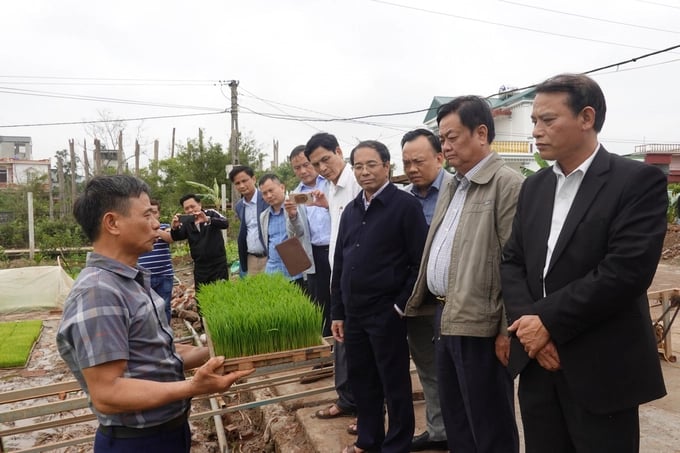
Minister of Agriculture and Rural Development Le Minh Hoan (2nd from the right) and the delegation visited large fields in Dong Hung district, Thai Binh in early 2023. Photo: Minh Phuc.
Dong Hung district, Thai Binh province is a purely agricultural district with a total agricultural land area of more than 14,000 hectares. Namely, the district dedicates at least 11,300 hectares of land to rice cultivation, and the annual yield of rice is estimated at nearly 150,000 tons.
After the local government made an effort to consolidate and change land plots, Dong Hung has reduced the amount of small, fragmented and scattered land plots owned by households and individuals. The reduced number of land plots as well as the decreased overall area has created favorable conditions for farmers to improve their fields, invest in intensive farming, restructure crops and livestock, and engage in business on the assigned land plot.
However, practice demonstrated that the model of widespread agricultural production is no longer consistent with the trend of social development. The withdrawal of labor from agricultural, rural areas to allow the accumulation and concentration of land for commodity agriculture development is an inevitable trend.
According to preliminary survey conducted in Dong Hung district, approximately 10% of the households with fields do not wish to engage in agricultural production. These households often lease their fields without contract, or contribute their products to other production households; 20% of the households wish to lease their fields; 20% of the households will agree to lease their fields if the price is reasonable; 50% of the households still have production needs to create food for their families. This has caused many communes to abandon their fields without organizing agricultural production.
As a result, Dong Hung district has encouraged its households to exchange, lease, rent and accumulate land with emphasis on abandoned areas. The district aims to bring mechanization and synchronous application of technical advances to the concentrated, large-scale commodity production in order to improve production efficiency per hectare of agricultural land.
So far, more than 500 households have accumulated at least 1 hectare of rice production land per household, reaching a total of 1,200 hectares. It is reported that 67 households have accumulated at least 5 hectares of land per household; 17 households with at least 10 hectares of land per household; 1 household with 20 hectares of land. Mechanization has applied to the majority of the accumulated land; these advanced equipments include transplanters, harvesters, dryers, tillers, pesticide spraying machines among many others.
Dong Hung's effort in accumulating land has reduced the area of abandoned fields in the district. The area of abandoned fields has reduced from 400 hectares in 2018 to approximately 35 hectares in 2023. The remaining abandoned fields concentrate mainly in the foothills of villages, in the industrial park's vicinity where the rat infestations, polluted wastewater and the low-lying areas have made it impossible for machineries to enter.
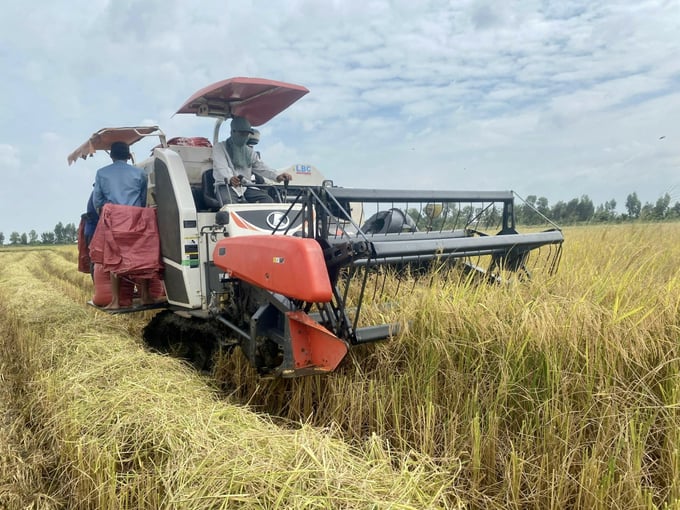
The accumulation of land will facilitate the application of machinery and technical advances to agricultural production. Consequently, it will help reduce costs, increase productivity, and improve value per unit of cultivation. Photo: Trung Quan.
According to Dong Hung District People's Committee, the restructuring of agricultural production and the construction of land accumulation models still face many challenges. Namely, the district's agricultural land area is still small, fragmented, and scattered. Furthermore, the organization of production cooperatives as well as the linkage of production and consumption between farmers and businesses through contracts are inefficient.
Farmers are afraid of losing their land, so they avoid leasing it. The spontaneous accumulation of land is not centralized, causing difficulties in the management and application of mechanization in agricultural production.
Many accumulating households lack investment capital for production, and the state's support capital is limited. Access to various credit sources is challenging, so investment in machinery, science and technology for agricultural production is restricted.
Mr. Dinh Vinh Thuy, Director of Thai Binh Department of Agriculture and Rural Development, said that statistics have shown that Thai Binh province has over 1,700 households with at least 2 hectares of farming area per hectare.
The household with the largest area belongs to Ms. Tran Thi Lanh at 70 hectares of farming land. She is the head of Giao Nghia village, Binh Minh commune, Kien Xuong district. Additionally, the application of mechanization through the use of transplanters are increasingly popular.
The rate of transplanting by machine in the province has reached 18%. Dong Hung district is a major contributor over 40% of farming area transplated by machine.
According to Mr. Thuy, Thai Binh's agricultural sector is developing following three main trends. Firstly, a part of agricultural labor will be reallocated to other areas and they will lease their fields to others. On the other hand, there have been cases of farmers avoiding both labor and leasing their fields.
Secondly, households have collected land from non-producing farmers to form large fields. Thirdly, several large field households have gathered land to form cooperatives such as Quang Lanh Agricultural Production and Business Cooperative with 10 members contributing 100 hectares of land for rice cultivation.
Thai Binh is promoting solutions to encourage the establishment of cooperatives on a voluntary basis after acknowledging that large field is a highly effective agricultural production model. This model is considered to share many similarities with the successful Guild model in Dong Thap province.
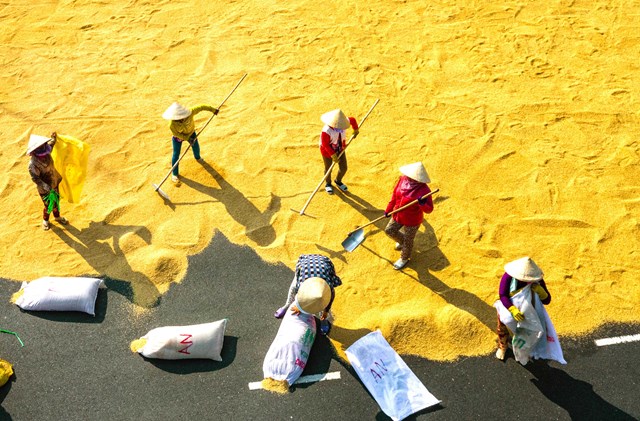
Thai Binh province provides farmers with an annual support of 20 kilogram of rice per sao. This is an effort to help farmers lease their fields when they have no needs for production. Photo: TL.
Regarding the support mechanism for land concentration, for households lease fields to others for agricultural production, the province provides farmers with an annual support of 20 kilogram of rice per sao from the province's budget. Communes who encourage farmers to accumulate land will also receive a support capital of 20 million VND per hectare.
Additionally, Thai Binh supports 50% of investment costs for dryers and transplanters (not exceeding 40 million VND per machine), because many households will face great difficulties in the post-harvest stage without the help of drying machines or transplanters.
Translated by Nguyen Hai Long
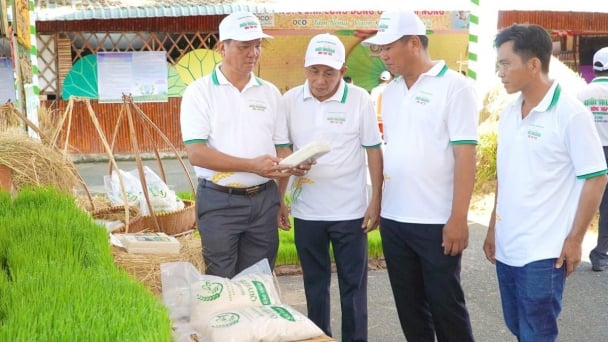
(VAN) Dong Thap has launched a meeting in response to the Action Month for the Environment under the theme 'Live Green - Join Hands for a Green Economy' at Tram Chim National Park.
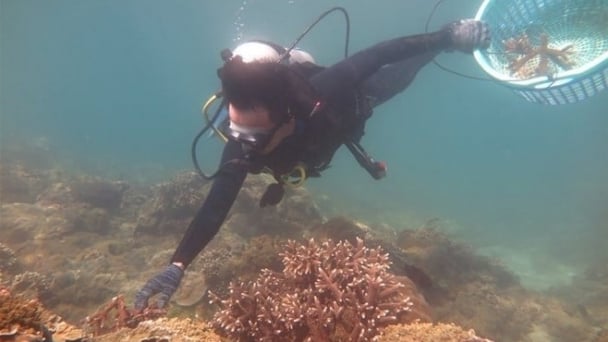
(VAN) The ocean has the capacity to absorb millions of tons of carbon, provided that mangrove forests, coral reefs, and biodiversity are protected.
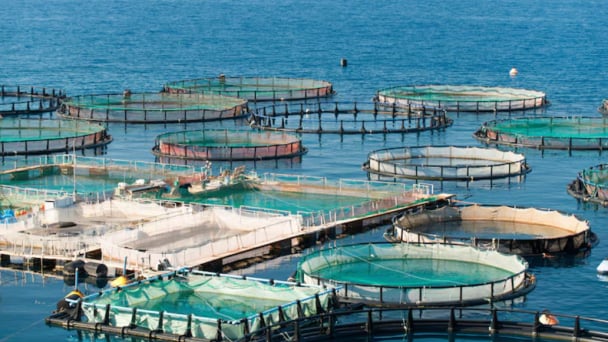
(VAN) Technology is redrawing the map of Vietnamese aquaculture: more modern, greener, and more sustainable.

(VAN) Novel process harnesses machine learning to reveal groups of genes that determine how efficiently plants use nitrogen.

(VAN) Several scientists and farmers are experimenting with soil treatment in some key durian-growing regions such as Cai Lay (Tien Giang), Dak Song, Gia Nghia, and Dak R’lap (Dak Nong).
/2025/05/25/4127-3-073637_820.jpg)
(VAN) Thanks to the promotion from an FAO-implemented project, vegetable production in greenhouses in Moc Chau has seen strong development, from 1.5 hectares in 2021 to nearly 50 hectares in 2024.

(VAN) FAO has recently supported USD 140,000 to implement the project 'Risk mitigation human-animal interface risks through disease control initiatives in pig farming.'